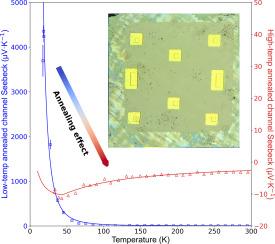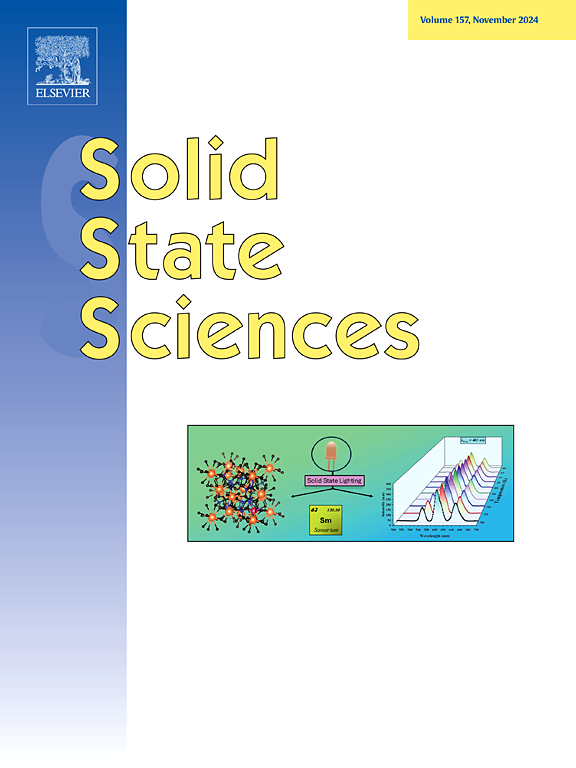电传输和塞贝克测量高度无序通道埋在钻石
IF 3.3
3区 化学
Q2 CHEMISTRY, INORGANIC & NUCLEAR
引用次数: 0
摘要
离子注入可以在金刚石表面下形成导电通道,通过精心选择注入和退火参数,可以控制其深度、厚度和微观结构。我们研究了这些通道中电导率和塞贝克系数的低温依赖性,这些通道由纳米尺度上具有不同拓扑和几何形状的各种自旋碳结构的复杂网络组成。随着退火温度的升高,我们观察到两种不同的电子输运体系的存在,其特征是随温度变化的电导率曲率的变化和塞贝克系数的符号变化,这两种体系之间存在几个数量级的差异。我们发现,基于跳跃的电子输运模型可以很好地捕捉到这些依赖温度的行为,其中总体电导率来自一组非相互作用的渗透路径,并且这两种机制与描述系统中渗透路径分布的两种不同统计数据相关联。本文章由计算机程序翻译,如有差异,请以英文原文为准。

Electrical transport and Seebeck measurements in highly disordered channels buried in diamond
Ion implantation enables the creation of conductive channels buried beneath the surface of diamond, with their depth, thickness, and microstructure being controllable through careful selection of implantation and annealing parameters. We investigate the low-temperature dependence of electrical conductivity and the Seebeck coefficient in these channels, which consist of an intricate network of various sp carbon configurations with different topologies and geometries at the nanometer scale. As the annealing temperature increases, we observe the existence of two distinct electronic transport regimes, characterized by a change in the curvature of the temperature-dependent conductivity and a sign change in the Seebeck coefficient, differing by several orders of magnitude between the two regimes. We show that these temperature-dependent behaviors are remarkably well captured by a hopping-based electronic transport model, where the overall conductivity results from a set of non-interacting percolation paths, and that the two regimes are associated with two distinct statistics that describe the distribution of the percolation paths in the system.
求助全文
通过发布文献求助,成功后即可免费获取论文全文。
去求助
来源期刊

Solid State Sciences
化学-无机化学与核化学
CiteScore
6.60
自引率
2.90%
发文量
214
审稿时长
27 days
期刊介绍:
Solid State Sciences is the journal for researchers from the broad solid state chemistry and physics community. It publishes key articles on all aspects of solid state synthesis, structure-property relationships, theory and functionalities, in relation with experiments.
Key topics for stand-alone papers and special issues:
-Novel ways of synthesis, inorganic functional materials, including porous and glassy materials, hybrid organic-inorganic compounds and nanomaterials
-Physical properties, emphasizing but not limited to the electrical, magnetical and optical features
-Materials related to information technology and energy and environmental sciences.
The journal publishes feature articles from experts in the field upon invitation.
Solid State Sciences - your gateway to energy-related materials.
 求助内容:
求助内容: 应助结果提醒方式:
应助结果提醒方式:


